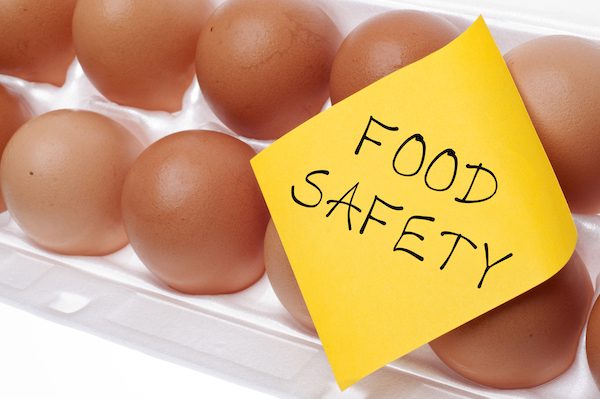Food safety is always a pressing concern for consumers, manufacturers, and retailers alike. In recent years, there has been an increased focus on the role of UV light in food safety. UV light has proven to kill bacteria and other contaminants on food surfaces.
Surface Sanitization
When you consider that contaminated surfaces cause nearly 80% of foodborne illnesses, it’s clear that UV light could have a significant impact on food safety. People can use UV light to sanitize food contact surfaces, like countertops, cutting boards, and utensils.
This precaution is crucial in restaurants or other food service operations, such as cafeterias, ghost kitchens, and food trucks, where the risk of surface or cross-contamination is higher.
Additionally, UV light can sanitize non-food contact surfaces, like floors and walls. This flexibility is vital in food processing facilities, where contaminants can quickly spread if not controlled.
Sanitize Packaging Materials
Food service companies can use UV light to sanitize packaging materials, like cans and bottles.
After all, the product contained inside is only as safe as the package that it comes in. For food manufacturers, who must ensure that their products are safe for everyone to consume, UV Light inspection is vital!
Inactivation of Pathogens
UV light has proven effective in inactivating various pathogens, including bacteria, viruses, and fungi. In addition, UV light effectively disinfects food and water and surfaces, and packaging materials.
When used for pasteurization, UV light can help extend the shelf life of food by reducing the growth of spoilage microorganisms. Therefore, pasteurization is essential in the food production industry, as it can help reduce food waste. Further, UV light can get used in replacement of other traditional methods, like heat pasteurization.
Detection Of Foreign Contaminants
Food service companies can also use UV light in food inspection systems to detect foreign contaminants in food. This process is done by shining UV light on the food and looking for fluorescence. Foreign contaminants, such as plastic or metal pieces, will glow under UV light, while the food itself will not.
Other foreign materials such as bacteria and viruses can also be detected using this method. In fact, UV light is a reliable way to detect Salmonella and E. coli in food samples.
When you consider the average cost of a food product recall costs businesses millions of dollars, it’s clear that the ability to detect foreign contaminants before they reach consumers is invaluable.
Support Clean Rooms
Another critical application of UV light in the food industry is its role in supporting clean rooms.
A clean room is a controlled environment useful for research and development or handling processed food items. These environments need to be free of contaminants, and food service professionals can use UV light to sanitize them.
In addition to sanitizing, UV light can detect contaminants in clean rooms. This evaluation is completed by setting up UV with a specialized UV lens in the rooms and monitoring fluorescence. If there are contaminants present, they will be visible under UV light.
Supporting Food Safety
UV light is a powerful tool that food service professionals can use to support food safety in various ways. From sanitizing surfaces to inactivating pathogens, UV light can help to keep food safe for consumers.
As consumers become more educated about food safety, manufacturers and retailers will be under pressure to improve their safety procedures, so implementing UV light in the food industry is likely to become more common. In addition, it is affordable, effective, and easy to use.
However, this technology is not without its critics, as some believe that UV light can potentially be harmful to human health if misused.
The Bottom Line
UV lights equipped with a specialized UV lens are a powerful tool that everyone can use to improve food safety. UV light is revolutionizing the food industry, from sanitizing surfaces and packaging materials to inactivating pathogens and detecting foreign contaminants.
Not only does it help to sanitize surfaces and create a cleaner environment, but it also minimizes the risk of contamination.
As more and more food service companies and restaurants turn to ultraviolet light for their on-site sanitation needs, we can rest a little easier knowing that our food is getting handled in the most hygienic way possible.
That means that consumers can have peace of mind knowing that the food meets the highest safety standards we’ve all come to expect.
It’s important to remember that we should take every precaution possible to keep ourselves and our families safe when it comes to our food. UV light is one step in the right direction for creating a healthier tomorrow.